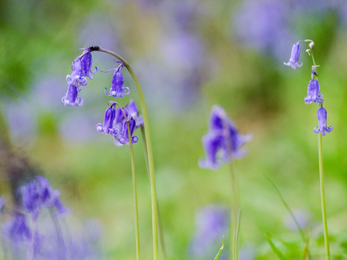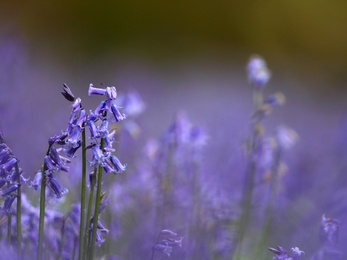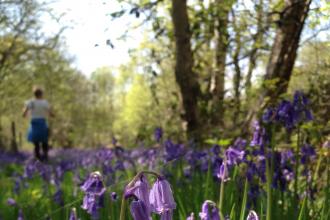Bluebells flower around May each year to allow them to make the most of the sunlight that is still able to make it to the forest floor habitat, before the canopy becomes too thick.
The sight of a sun-dappled woodland with bluebells reaching as far as the eye can see is one many of us anticipate keenly each year.
But we must visit responsibly to protect these precious habitats and ensure the bluebells come back, year after year.
Here are our three top tips...
Stick to the paths
As tempting as it is to venture off the beaten track to an untouched oasis, please stick to the paths and follow any signage.
Bluebells are delicate and easily damaged, preventing the leaves from photosynthesizing and causing the plant to die back. It can take between five and seven years for a plant to become established, so a little wander off the main path can have a long-term impact.
Keep your dogs on a lead
It's not just humans - dogs too can snuffle and dig through the undergrowth, damaging precious habitats on the ground which many of our woodland species call home.
The same goes for picking up dog poo - please take it home, rather than kicking it into the undergrowth!
Visit at quiet times
Some of our reserves get busy at the weekends or in sunny weather - consider visiting at a quieter time (if you can) to allow you to safely socially distance from others on the main paths.



